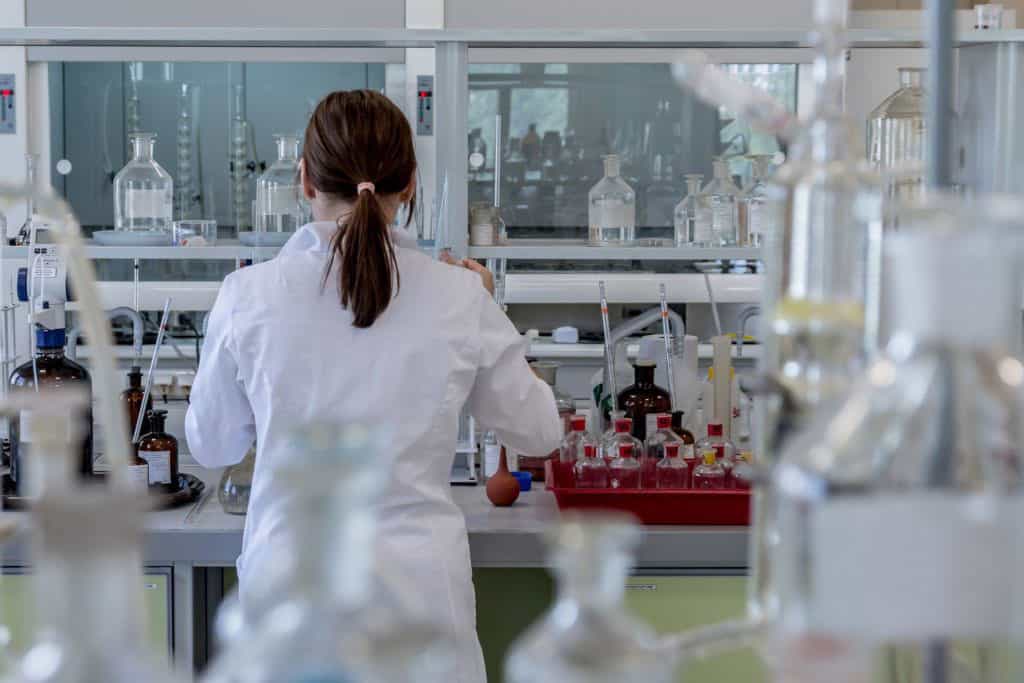
PEGylation Chemistry
PEG reagent selection guide match your needs of PEGylation chemistry and application.
The Process: PEGylation Chemistry
PEGylation is a chemical process to covalently attach PEG polymers to a substrate including molecules, macromolecules, particles, surfaces etc. Based on reactive sites in the substrate entities, PEGylation chemistry requires different functionalities on PEG reagents. The list below gives several examples of commonly used PEGylation chemistry based on literature data.
PEGylation Reagents
Amine PEGylation and N-terminal PEGylation: PEG reagents react with amine present in biological macromolecules.
| PEG reagents | PEGylation |
| PEG-NHS | The N-hydroxysuccinimide (NHS) activated ester of PEG carboxylic acid can react with the amino group of lysine. The coupling requires only mild conditions, pH 7-9, low temperature (5-25°C) for short period of time. The formed amide bond is physiologically stable. |
| PEG-Aldehyde | Reductive amination with primary amines to produce secondary amines, in the presence of reducing agents such as sodium borohydride and sodium cyanoborohydride. The pH is important for reductive amination. PEG-Aldehyde is a very good reagent for N-terminal PEGylation. |
| PEG Epoxide | Nucleophilic addition |
| PEG- Isothiocyanate | React with amine to produce a stable thiourea linkage. |
| PEG-COOH | Usually the acid needs to be activated, such as NHS ester. |
| PEG-NPC | Amine reacts with NPC functionalized PEG under proper conditions. |
| PEG-Acrylate | Michael addition between amine and acrylate ester. It is a relatively slow reaction. |
Carboxyl PEGylation: PEG reagents react with carboxylic acid in the presence of coupling agents such as DCC (N,N’-dicyclohexylcarbodiimide) and EDIC (N-(3-dimethylaminopropyl)-N’-ethylcarbodiimide, HCl salt).
| PEG reagents | PEGylation |
| PEG-Amine | Amide formation under DCC or EDC coupling conditions |
| PEG-Hydrazide | After activated by EDIC at mild acidic pH, the carboxyl group of proteins readily react with PEG-hydrazide, while the amino groups present in all reagents could remain inactive in this particular conditions. |
| PEG-Halide/sulfonate | PEG-halide (chloride, bromide, iodide, tosylate and mesylate) reacts with deprotonated carboxyl groups i.e. -COO- salt. |
Thiol PEGylation: Thiol PEGylation is for free thiols of biological molecules such as cysteine.
| PEG reagents | PEGylation |
| PEG-Maleimide | Michael addition, thiols react with the C=C bond in the maleimic ring to form a physiological stable linkage. The best reaction condition is at pH 8. |
| PEG-OPSS | Disulfide S-S bond formation, which can be reversed by reducing agents such as sodium borohydride and thioethanolamine |
| PEG-Vinylsulfone | Michael addition, thiols react with the C=C bond to form a physiological stable linkage |
| PEG-Thiol | Oxidative disulfide S-S bond formation |
| PEG-Halide | PEG-halide (chloride, bromide, iodide, tosylate and mesylate) reacts with free thiol. Iodoacetate or iodoacetamide is very reactive towards free thiols. |
| Thiol-ene | Thiol reacts with special double bond groups including maleimide, norbornene, acrylate, acrylamide, methacrylate, methacrylamide, carbonylacrylic, vinylsulfone. |
Hydroxyl PEGylation
| PEG reagents | PEGylation |
| PEG-Isocyanate | Hydroxyl groups react with PEG-NCO, however special considerations are required. |
| PEG-NPC | Hydroxyl groups react with NPC to from a carbonate linkage. |
| PEG-Silane | Silane reacts particularly with hydroxylated surfaces. |
| PEG-Epoxide | PEG-Epoxide reacts with hydroxyls best at pH 8.5-9.5. |
Click PEGylation: Click chemistry is a versatile tool to conjugate PEG to various substrates through copper-free or copper-catalyzed azide-alkyne cycloaddition reactions.
| PEG reagents | PEGylation |
| PEG-Azide PEG-Alkyne | Azide reacts with alkyne in the presence of copper catalyst to form a stable 1,2,3-triazole ring linkage. It is called Azide-Alkyne Huisgen Cycloaddition. |
| PEG-DBCO | Azide reacts with cyclooctyne including DBCO through catalyst-free strain-promoted azide-alkyne cycloaddition (SPAAC). |
Surface PEGylation: Reactive PEG to functionalize, coat, derivatize nanoparticles, surfaces, beads, resins.
| PEG reagents | PEGylation |
| PEG-Thiol | PEG-thiol reacts with the most common nobel metal surfaces such as gold, silver etc. |
| PEG-Silane | PEG-Silane reacts with hydroxylated surfaces such as silica, glass, hydroxylated or acid activated nobel metal surfaces such as Pt, Pd etc. |
Polymerizing PEGylation: Under radical initiators, UV illumination or high temperature, PEG crosslinkers could polymerize to form hydrogels, microparticles or crosslinked networks for drug delivery and tissue engineering
| PEG reagents | PEGylation |
| PEG-Thiol | Multi-arm PEG-thiols can crosslink itself to form disulfide bonds, which could be reversed under proper reducing conditions. |
| PEG-Acrylate | Bifunctional or multi-arm PEG-acrylate, PEG-methacrylate, or PEG-acrylamide can crosslink via stable carbon-carbon bonds. |
Reversible PEGylation: Cleavable bonds could be formed using certain PEG reagents to achieve reversible PEGylation.
| PEG reagents | PEGylation |
| PEG-Hydrazide | PEG-hydrazide may react with carbonyls (ketone or aldehyde) to form acylhydrazone linkage which is labile to hydrolysis under acidic conditions. |
| PEG-Thiol | PEG-S-S-PEG disulfide bond could be cleaved with proper reducing agents. |
Disclaimer: The information abovementioned serves only as a general guide for selecting PEGylation reagents. Please refer to literature publications for detailed and specific PEGylation procedures and use your own judgment. Creative PEGWorks assumes no liability for the information provided within this web page.
